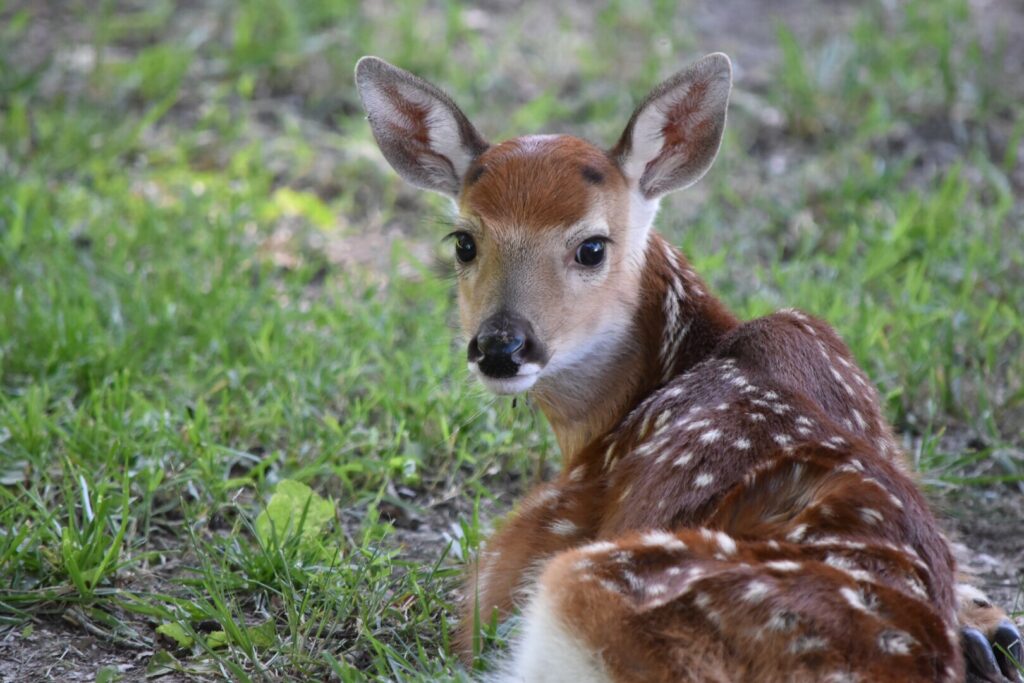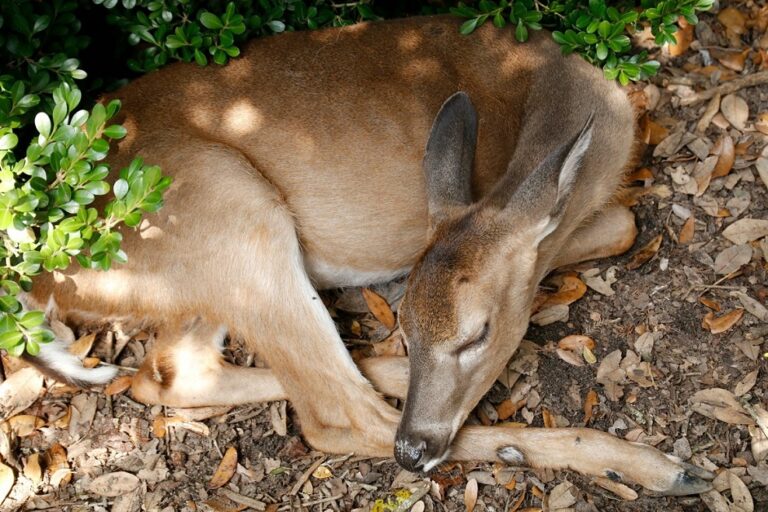
September 28, 2021
Why Do Deer Sleep In My Yard?
As deer are hoofed animals, they are the poorest sleepers of all species of wildlife. One of the reasons is that they are easy prey for predators. Another reason is that their bodies, unlike those of smaller prey, are too large to take refuge in protective burrows.
Deer and other wild ungulates spend all their time either awake or barely asleep. This is due to the threat that being deep in sleep can lead to a situation in which they are vulnerable to attack. Their alertness and speed are the only defense against predators.
When you notice a deer sleeping in your yard and try to approach it, it may be startled by your presence in their sleeping area. So if you spot a deer or several deer leap away, don’t get nervous. Try to remain calm and carefully step back in the direction from which you originally came from. You wouldn’t want to scare the deer into moving to another place on your property!
Read on to learn more as we talk about deer sleep habits.
Where Do Deer Normally Sleep And Rest?
On average, deer will sleep anywhere as long as they feel very safe and the place has a good supply of food resources.
Areas with thicker plant growth are selected most often as their bedding (sleeping) areas. Deer usually sleep hidden in the underbrush.
Also, as their bedding site, deer choose a flattened place that has a shape similar to their body.
Deer often bed in standing corn and graze on the clover. They can sometimes be seen venturing into food plots during the day, but even though they’re resting, they are extremely wary.
What’s more, ponds attract all kinds of wildlife, including deer. So if you have a small pond in your backyard, deer may stay close to the water source. In particularly cold or dry weather, deer need to drink more often, thus, they will visit your pond to get water. They also like the vegetation that grows around the pond. This provides them with a cover and shelter to rest and sleep.
Do Deer Sleep In The Same Place Every Night?
Deer do not sleep in a single location all year round. Most of them have a limited number of potential bedding sites within their home range. These locations are most likely determined by the degree of shading, slope and aspect of the ground, wind speed and direction, and proximity to sources of food.
By having several sleeping sites in a home range, these animals might change which ones they use whenever they change their feeding location. Female deer are particularly prone to using specific bedding sites during the fawning season.
Where Do Deer Sleep When It Rains?
Deer can sense when a storm or rain is coming, which allows them to find a suitable location in advance, where they can rest until the rain is over. These animals will rest and sleep in the same way as any other wild animals do during rain.
However, depending on the intensity of the rainfall, their habits may differ slightly. They usually feel safer making movements when the rain is steady, with very little or no wind. The moisture and raindrops on the vegetation allow them to move through the forest without making any noise.
Deer are able to adapt in the rain and are not much affected by the rain due to certain characteristics. The rain stimulates their senses and confidence, for example, they have a stronger sense of smell in the rain. Their thick fur keeps them warm, even in harsh and very cold weather conditions.
Additionally, deer bedding sites can be found in locations with a thermal cover. These areas are sheltered from the rain and wind, usually in thick shrubs, stands of conifer trees and other very tall trees.

Do Deer Lay Down To Sleep?
Deer usually lie down when they want to sleep. This is because they lose muscle control while sleeping and are not able to lock their legs to remain standing, the same way that elephants do. This usually makes the sleeping down on the ground serve a dual function – as a place to sleep or rest, and to ruminate their food.
While the deer is lying down during sleep, it typically folds its legs upwards beside its body. Its head is left raised so that the deer is able to smell and hear as much as possible. In this position, the deer will chew their food, groom themselves, rest, and sleep.
How Long Do Deer Sleep Per Day?
Deer do not spend a lot of time sleeping. This wildlife sleep in stretches of only a few minutes at a time.
Young deer play all day and sleep the night through. Adult deer try to snooze during the day as well and do their deer duties like foraging for food and feeding mainly at night.
Because deer fall prey to many carnivores, they are usually alert, especially when bedded down. Studies have shown that deer sleep an average of around 4.5 hours a day and only 30 minutes in a deep sleep state (REM). Some researchers confirm that the best description of how deer sleep is drowsiness, which means that they are neither completely awake nor fully asleep.
Deer do not restrict their sleeping periods to nighttime, but alternate bedding with feeding and ruminating (i.e. chewing their food) throughout the 24-hour cycle.
Do Deer Sleep Together?
Deer are social animals that travel, rest, and sleep together as a family. Does (female deer) stay and sleep with their offspring. Sometimes a doe that has no fawns might be spotted alone, and also bucks (male deer) can often go their separate ways, especially during the rut. But overall, it is far more common to see deer in groups, especially does which typically travel in family groups.
During the cold season, particularly in winter, does often form into larger bands with their offspring, and sometimes even the offspring of the offspring for a multi-generation family group, where they sleep together to keep them warm. Bucks, on the other hand, stick in bachelor groups for the most part of the year.
During the winter and times of deep snow cover, multiple deer will bed together. They create mass bedding sites where there is sufficient protection from the elements.
The highly skilled and experienced technicians at Westchester Wildlife can get rid of deer on your property using safe, quick, and effective methods of trapping and removal. So if you have a deer problem, contact our wildlife specialists today for a free quote!
